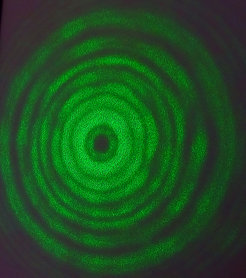Squeezed light in higher order modes
We investigate the feasibility of the generation of squeezed vacuum states in higher-order spatial modes for future gravitational-wave detectors.

Two of the most prominent noise sources in gravitational-wave detectors are quantum and coating Brownian thermal noise (CBTN). While quantum noise can already be greatly reduced down to or even below the CBTN level via the injection of squeezed vacuum states into the detectors, techniques for the CBTN reduction are still in development.
One proposed method is to substitute the currently used fundamental Gaussian laser mode with a higher-order spatial mode (HOM). These modes show a more uniform intensity distribution and can hence better average over the thermal fluctuations of the mirrors.
Changing the laser mode would, however, require the efficient generation of squeezed vacuum states in the chosen HOM to keep the quantum noise on a low level. We thus aim to investigate how efficiently different higher-order Hermite- and Laguerre-Gaussian modes can be squeezed.
